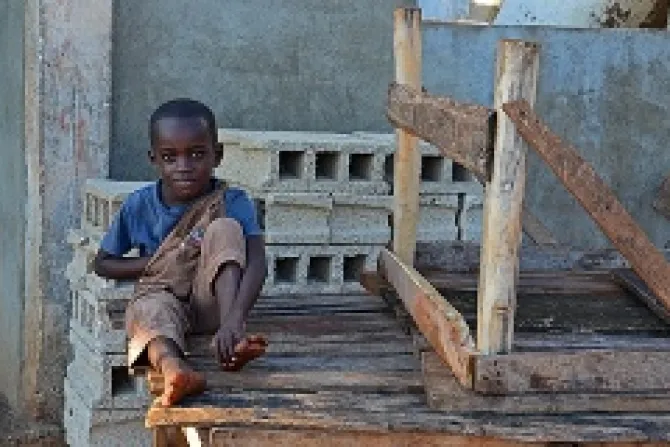Port-au-Prince, Haiti, Jan 16, 2014 / 17:02 pm
Four years after a desolating earthquake affected millions in Haiti, Catholic Relief Services continues to help the nation move from recovery to addressing social concerns that pre-dated the catastrophe.
"You can't help but have great love for Haitians," Darren Hercyk, Catholic Relief Services' Country Representative for Haiti based in Port-au-Prince, told CNA Jan. 15.
In Haiti, he said, there are "stories of great courage and hope; at the same time you hear stories of great challenges."
On Jan. 12, 2010, a 7.0 magnitude earthquake hit Haiti near its capital city of Port-au-Prince, leaving 230,000 people dead and over 1.5 million people without shelter.
Prior to the earthquake, Catholic Relief Services had already been present and working in Haiti "for a long time," with a great number of resources and local connection and over 300 employees in the country. After the earthquake, Hercyk explained, "we mobilized all of those resources for lifesaving."
In the disaster's aftermath, Catholic Relief Services was able to provide food and water to more than 1 million people and emergency shelter to more than 100,000 individuals. The organization also ensured that 71,000 patients received medical treatment, including over 1,000 surgeries.
Since the initial stages of relief work, CRS has been active in assisting in the country's recovery. The organization has helped find homes for the over 1 million persons displaced by the earthquake, including for all of the people located in four camps that the group ran and closed.
In addition, the relief organization helped establish and repair thousands of sanitation facilities, water catchment units, showers, water tanks, sewage drainage, and other sanitation projects.
Traveling from the airport to a majority of places, "you would see very little signs of the earthquake," Hercyk said. "There has been great progress."
"Now we're really working on the systemic issues that predated the earthquake," he added, speaking of the organization's continuing work int the country.
Previously, "people have steered away from working with institutions because it takes time" leaving a social infrastructure that cannot adequately address people's needs, Hercyk explained.
He added that many other organizations and people have found it easier to come in from other countries, creating their own programs outside of existing institutions.
The most important institution that CRS works with to help foster this lasting change, he said, is the Catholic Church.
"The Church in places like Haiti does everything," he explained, pointing to the help it gives people in medicine, education and housing, but noting that above all, "it provides hope."
"That's why it's so exciting for us," he continued, "to be working not only with the Church but through the Church."
"The Catholic Church is the largest educator in the country," he explained, noting that the Church has more students and educators than even the government. Thus, as part of the 180 projects going on throughout the country's 10 dioceses, CRS is working with teachers to complete certification and training in order to improve teaching quality and access for Haitian students everywhere.
The organization is also working with Haitians to expand and improve the nation's health care system, rebuilding hospitals and training staff. At the center of this project is the reconstruction of the St. François de Sales Hospital to transform it into a modern teaching hospital. For this project, "the key is working with the Catholic Health Association" as well as with local doctors, nurses and medical staff who are leading the project.
Farmers too have received help from Catholic Relief Services, with the organization helping to link farmers to one another, the market, the government and private capital.
Catholic Relief Services is also helping in Port-au-Prince to transition "populations there from temporary housing to permanent housing." The goal, Hercyk said, is not to give away housing but to be "working with existing institutions to create access to housing for the poor" by working not only with the government and construction workers but with banks and local institutions as well.
"We want to create a model that can be replicated" in other areas in Haiti, he explained.
All of these projects have been advanced by working with the Haitian dioceses and bishops' conference, which is headed by Cardinal-elect Chibly Langlois.
Still, even with the widespread network and institutional support CRS has in the country, enacting such broad social change has not been easy – or quick.
"It takes time to set up," Hercyk said, noting that while recovery and establishing organizations can be quick, creating change is a slow process.
"Real change and progress happen when you work through the institutions" that already exist, he continued, saying that the key is placing "Haitians in those leadership positions."
And, leading the institutional transformation, Catholic Relief Services is helping Haiti to make changes not only "with institutions but through them."


